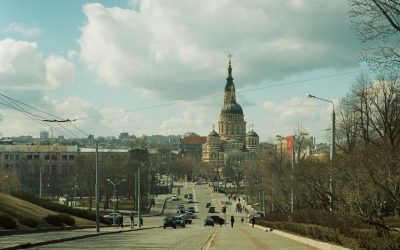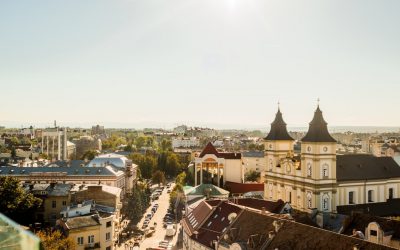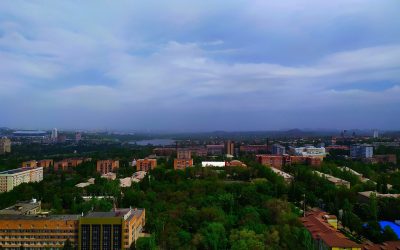Explore the World Through Geography, Natural Resources & Daily History
Clear, reliable and engaging guides that help you understand our planet — from UK geography education to global natural resources and On This Day history events.
Explore, discover, and learn about the wonders of our world! At Earth Site, we’re passionate about bringing geography, history, and science to life for curious minds of all ages. Whether you’re delving into historical events, uncovering the mysteries of the natural world, or seeking interactive resources, you’re in the right place.
Here, you can uncover the stories behind historical events, explore the natural wonders of our planet, and gain valuable insights into how the Earth’s systems shape our daily lives. From the towering peaks of mountain ranges to the far-reaching impacts of human innovation, we aim to make every topic both engaging and informative.
Start your journey of discovery with us today, and let’s make learning an adventure!
What We Cover
Earth Site brings together engaging and accessible educational content designed to help you understand the world, its history, and its natural systems.
🌍 Geography Education (UK & Worldwide)
We publish clear, easy-to-understand geography resources for students, teachers and curious learners. Our guides support geography education in the UK and cover physical geography, climate, ecosystems, population, and global development.
⛏️ Natural Resources & Environmental Geography
Explore detailed country profiles covering natural resources, mining, energy, geology and global environmental challenges. We show how nations manage minerals, water, land and ecosystems, and why these resources matter.
📅 On This Day in History
Every day has a story. Our On This Day history series features major events, anniversaries, traditions, and cultural milestones from around the world — with timelines, context, and fun facts.
TIMELINE
Exploring the Wonders of Rubidium: Unveiling the Secrets of this Alkali Metal
Rubidium is a chemical element with the symbol Rb and atomic number 37. It is a soft, silvery-white alkali metal that belongs to the group of elements known as the alkali metals. Rubidium is highly reactive and has a low melting point, making it a fascinating element to study. It is found in small quantities in the Earth’s crust and has various applications in fields such as technology, medicine, and scientific research. Rubidium has several unique properties that make it interesting to scientists. It is one of the most reactive elements, readily reacting with water and oxygen in the air. It is also highly conductive, making it useful in electronics and battery technology. Additionally, rubidium has a low ionization energy, meaning it can easily lose an electron and form positive ions. These properties make rubidium valuable in various applications. Summary Rubidium is a rare and fascinating element with unique physical and chemical properties. Rubidium was discovered in 1861 by German scientists Robert Bunsen and Gustav Kirchhoff. Rubidium has a close atomic structure to other alkali metals and is highly reactive with water and air. Rubidium is found in small amounts in minerals such as lepidolite and pollucite, and in seawater and mineral springs. Rubidium has various applications in modern science, including in atomic clocks, GPS systems, and medical imaging. The Discovery of Rubidium: A Historical Perspective Rubidium was discovered in 1861 by German chemists Robert Bunsen and Gustav Kirchhoff. They were studying the mineral lepidolite when they noticed a bright red line in its spectrum. This line indicated the presence of an unknown element, which they named rubidium after...
Exploring the Hidden Gems of Luhans’k: A Journey Through Eastern Ukraine
Luhans’k, located in eastern Ukraine, is a city that is often overlooked by tourists. However, this hidden gem is filled with surprises and is definitely worth a visit. With its rich history, stunning natural landscapes, unique local cuisine, vibrant art and culture scene, and warm hospitality, Luhans’k has something to offer for every type of traveler. Summary Luhans’k is a city full of surprises, with a rich history and unique local cuisine. The city boasts stunning natural landscapes and a vibrant art and culture scene. Hidden gems can be found throughout Luhans’k, including religious sites and lesser-known attractions. Festivals and celebrations in Luhans’k are a colourful and exciting experience. Outdoor activities and sports are plentiful, and visitors can expect warm hospitality and a rich cultural experience. Discovering the Rich History of Luhans’k: From Ancient Times to Modern Day Luhans’k has a fascinating history that dates back to ancient times. The city has been inhabited since the 5th century BC and has seen the rise and fall of various civilizations. From the Scythians to the Slavs, Luhans’k has been influenced by different cultures throughout the centuries. One of the must-visit historical landmarks in Luhans’k is the Luhansk Regional Museum. This museum showcases the history and culture of the region through its extensive collection of artifacts and exhibits. Another notable site is the Luhansk Taras Shevchenko National University, which was founded in 1921 and is one of the oldest universities in Ukraine. A Culinary Adventure: Exploring Luhans’k’s Unique Local Cuisine Luhans’k’s cuisine is a delightful blend of Ukrainian, Russian, and Eastern European flavors. The city is known for its hearty and...
Discovering the Charm of Kyiv: A British Perspective
Kyiv, the capital city of Ukraine, may not be the first destination that comes to mind for British travelers, but it is a hidden gem waiting to be discovered. With its rich history, vibrant culture, and warm hospitality, Kyiv offers a unique and unforgettable experience for visitors. As a British traveler who has had the pleasure of exploring this beautiful city, I can attest to its charm and allure. Summary Kyiv has a rich history and culture that is worth exploring. The architecture of Kyiv is impressive and can be appreciated from a British perspective. Ukrainian cuisine is a delicious surprise that should not be missed. Kyiv’s vibrant nightlife scene offers a unique experience for visitors. The people of Kyiv are warm and welcoming, making it a must-visit destination for Brits. Exploring Kyiv’s Rich History and Culture Kyiv is a city steeped in history, with a heritage that dates back over a thousand years. From the iconic Saint Sophia Cathedral to the majestic Kyiv Pechersk Lavra, there are numerous landmarks that showcase the city’s historical significance. These architectural marvels are not only visually stunning but also provide a glimpse into the past and the cultural heritage of Ukraine. In addition to its historical landmarks, Kyiv is home to a plethora of museums and galleries that showcase Ukrainian culture. The National Museum of Ukrainian History and the National Art Museum of Ukraine are just a few examples of the institutions that offer a deeper understanding of the country’s art, history, and traditions. From ancient artifacts to contemporary art exhibitions, these cultural institutions provide a comprehensive overview of Ukrainian culture. Furthermore,...
Unraveling the Mysteries of Krypton: Exploring the Fascinating Properties of the Elusive Element
The periodic table is a fundamental tool in chemistry that organizes all known elements based on their atomic number, electron configuration, and recurring chemical properties. One group of elements that holds particular significance is the noble gases. These gases, including helium, neon, argon, krypton, xenon, and radon, are characterized by their low reactivity and stable electron configurations. Among these noble gases, krypton plays a crucial role in various scientific and industrial applications. Krypton is a chemical element with the symbol Kr and atomic number 36. It was discovered in 1898 by Sir William Ramsay and Morris Travers while studying the residue left after evaporating liquid air. The name “krypton” is derived from the Greek word “kryptos,” meaning hidden or concealed, as it was initially difficult to isolate from other gases. Since its discovery, krypton has been extensively studied for its physical and chemical properties, as well as its applications in various fields. Summary Krypton is an important element in the periodic table with unique physical and chemical properties. The discovery of krypton was a significant milestone in the history of chemistry. Krypton has a high density and boiling point, making it useful in industrial applications such as lighting and lasers. Krypton also has medical applications in diagnostic imaging and radiotherapy. Krypton’s presence in the atmosphere has an impact on climate change and the environment. The Discovery of Krypton: A Brief History and Milestones The existence of krypton was first observed in 1896 by Scottish chemist Sir William Ramsay and English chemist Morris Travers. They were studying the residue left after evaporating liquid air when they noticed a new spectral...
Discovering the Hidden Gems of Kirovohrad: A Journey Through Ukraine’s Charming City
Nestled in the heart of Ukraine, Kirovohrad is a lesser-known destination that offers a wealth of hidden charms waiting to be discovered. While it may not be as famous as cities like Kyiv or Lviv, Kirovohrad has its own unique attractions and experiences that make it a worthwhile destination for travellers seeking something off the beaten path. Summary Kirovohrad is a hidden gem with rich history, stunning architecture, and delicious cuisine. The city boasts impressive landmarks, including the Cathedral of St. John the Baptist and the Old Castle. Local cuisine is a must-try, with dishes like borscht and varenyky. Kirovohrad’s natural scenery is breathtaking, with parks, lakes, and forests to explore. The city’s arts scene is vibrant, with galleries and museums showcasing local talent. History and Culture: Uncovering the Rich Heritage of Kirovohrad Kirovohrad has a rich history that dates back to its founding in 1754. Originally known as Yelisavetgrad, the city was named after Empress Elizabeth of Russia. Over the years, it has undergone several name changes, finally settling on Kirovohrad in 1939 in honor of Soviet leader Sergey Kirov. To truly appreciate the city’s history, a visit to its museums and cultural institutions is a must. The Kropyvnytskyi Regional Museum is a great place to start, offering a comprehensive look at the region’s history through its extensive collection of artifacts and exhibits. The museum also hosts regular events and workshops that provide visitors with a deeper understanding of the local culture. Architecture and Landmarks: Discovering the City’s Most Striking Buildings Kirovohrad is home to a variety of architectural gems that showcase its rich history and cultural heritage....
Exploring the Hidden Gems of Khmelnytskyi (Khmel’nyts’kyy): A Journey Through Ukraine’s Historic City
Khmelnytskyi is a city located in western Ukraine, in the historic region of Podolia. It is the administrative center of the Khmelnytskyi Oblast and has a population of over 250,000 people. The city has a rich history that dates back to ancient times, with evidence of human settlement in the area as early as the 9th century. Throughout its history, Khmelnytskyi has been influenced by various cultures and empires, including the Polish-Lithuanian Commonwealth, the Ottoman Empire, and the Russian Empire. Khmel’nyts’kyy is known for its significant role in Ukrainian culture. The city is named after Bohdan Khmelnytsky, a prominent figure in Ukrainian history who led an uprising against Polish rule in the 17th century. Khmelnytsky’s rebellion marked a turning point in Ukrainian history and is considered a symbol of national liberation. Today, Khmel’nyts’kyy is proud of its heritage and celebrates its cultural identity through various festivals, events, and traditions. Summary Khmel’nyts’kyy is a city with a rich history and culture, making it a great destination for travellers. The city is home to many architectural marvels, including landmarks like the Cathedral of the Holy Trinity and the Potocki Palace. Visitors can also explore the city’s artistic heritage by visiting museums and galleries like the Khmel’nyts’kyy Regional Museum and the Art Gallery of the City. Foodies will love the local food scene, with a variety of eateries serving up traditional Ukrainian dishes like borscht and varenyky. The city is also known for its festive spirit, with seasonal celebrations like the Khmel’nyts’kyy City Day and the Christmas Market. Discovering the Architectural Marvels of Khmel’nyts’kyy: A Tour of the City’s Landmarks One...
Uncovering the Properties and Uses of Bromine: A Fascinating Element
Bromine, a chemical element with the symbol Br and atomic number 35, is a highly reactive reddish-brown liquid that belongs to the halogen group of elements. It was first discovered by the French chemist Antoine Jérôme Balard in 1826. Balard was able to isolate bromine from seawater, which led to its name derived from the Greek word “bromos” meaning “stench” due to its strong odor. Bromine has since become an essential element in various industries. Its unique properties make it valuable in applications such as flame retardants, water treatment, agriculture, medicine, and photography. The versatility of bromine has made it a crucial component in many products and processes. Summary Bromine was discovered in 1826 by Antoine Balard, a French chemist. Bromine is a reddish-brown liquid that is highly reactive and toxic. Bromine occurs naturally in seawater, salt lakes, and underground brine deposits. Exposure to bromine can cause skin irritation, respiratory problems, and even death in high concentrations. Bromine is used in a variety of industrial applications, including flame retardants, fumigants, and disinfectants. Physical and Chemical Properties of Bromine Bromine is a reddish-brown liquid at room temperature and has a strong, unpleasant odor. It is one of the few elements that exist as a liquid under normal conditions. It has a high density and is slightly soluble in water. Bromine is highly reactive and can easily form compounds with other elements. Chemically, bromine is a halogen and shares similar properties with other elements in its group, such as chlorine and iodine. It has seven valence electrons, making it highly reactive and capable of forming stable compounds with other elements. Bromine...
Discovering the Charms of Kherson: A Journey Through Southern Ukraine
Kherson is a city located in southern Ukraine, situated on the banks of the Dnieper River. With a population of around 300,000 people, it is often overlooked by tourists in favor of more well-known destinations in Ukraine. However, Kherson is a hidden gem that offers a unique and authentic Ukrainian experience. When visiting Kherson, you can expect to find a city that is rich in history, culture, and natural beauty. From its historical landmarks and architectural wonders to its vibrant nightlife and delicious cuisine, Kherson has something to offer every type of traveler. Summary Kherson is a hidden gem in southern Ukraine, offering a unique blend of history, culture, and natural beauty. The city has a rich historical significance, with roots tracing back to the 18th century and the founding of the Russian Empire. From ancient to modern times, Kherson boasts a diverse range of architectural wonders, including stunning cathedrals, palaces, and museums. Kherson’s parks and gardens are a must-see for nature lovers, with picturesque landscapes and scenic views. The city’s vibrant culture is on full display through its festivals, music, art, and gastronomic delights, offering a truly immersive experience for visitors. The Historical Significance of Kherson: Tracing the City’s Roots Kherson was founded in 1778 by Grigory Potemkin, a Russian military leader and statesman. The city was strategically located at the mouth of the Dnieper River and served as an important naval base for the Russian Empire. It played a significant role in Ukraine’s history, particularly during the Russian Civil War and World War Today, visitors to Kherson can explore its historical landmarks and monuments that tell the...
Exploring the Hidden Gems of Kharkiv: A Journey Through Ukraine’s Second Largest City
Kharkiv, located in northeastern Ukraine, is the country’s second largest city and serves as a major cultural and economic center. With a population of over 1.4 million people, it is a bustling metropolis that offers a unique blend of history, architecture, art, and outdoor spaces. The city is situated in the Kharkiv Oblast region and is known for its strategic location near the Russian border. It has historically been an important transportation hub, connecting Ukraine with Russia and other European countries. Kharkiv is also home to several universities and research institutions, making it a center for education and innovation. Summary Kharkiv is Ukraine’s second largest city, with a rich history and vibrant culture. The city boasts impressive architectural marvels, including buildings and monuments from various eras. Kharkiv has a thriving arts scene and a rich cultural heritage, with plenty of opportunities to explore both. Food and drink in Kharkiv are a must-try, with local cuisine and top-rated restaurants and bars. The city also offers beautiful parks and gardens, great shopping, sports facilities, and day trips to nearby towns and villages. The History of Kharkiv: Tracing the City’s Roots from Ancient Times to the Present Day Kharkiv has a rich history that dates back to ancient times. The area was first settled by Slavic tribes in the 2nd century AD and later became part of the Kievan Rus’ state. In the 17th century, Kharkiv became an important trading center and was granted city status by the Russian Empire. During the 19th century, Kharkiv experienced rapid industrialization and became a major center for manufacturing and trade. It was also a hub...
Discovering the Hidden Gems of Ivano-Frankivs’k: A Journey Through Ukraine’s Charming City
Nestled in the western part of Ukraine, Ivano-Frankivs’k is a hidden gem waiting to be discovered. With its rich history, vibrant culture, and stunning architecture, this city offers a unique and authentic Ukrainian experience. Originally founded in the 17th century as a fortress, Ivano-Frankivs’k has since grown into a bustling city with a population of over 200,000 people. One of the reasons why Ivano-Frankivs’k is worth visiting is its strategic location. Situated at the foothills of the Carpathian Mountains, the city serves as a gateway to the beautiful landscapes and outdoor activities that the region has to offer. Additionally, Ivano-Frankivs’k is well-connected to other major cities in Ukraine, making it easily accessible for both domestic and international travellers. Summary Ivano-Frankivs’k is a hidden gem in Ukraine with a rich history and culture. Exploring the old town is a must-do activity, with its historic centre and iconic buildings. Local cuisine is a highlight, with must-try dishes like banosh and varenyky. The city’s art scene is also worth exploring, with galleries and museums showcasing local talent. Nature escapes are plentiful, with parks and gardens offering a peaceful respite from the city. The Rich History and Culture of Ivano-Frankivs’k Ivano-Frankivs’k has a fascinating history that dates back centuries. Originally known as Stanisławów, the city was named after its founder, Polish nobleman Stanisław Potocki. Throughout its history, Ivano-Frankivs’k has been influenced by various cultures and empires, including Polish, Austrian, and Soviet. This diverse heritage is reflected in the city’s architecture, traditions, and cuisine. The cultural influences in Ivano-Frankivs’k can be seen through its vibrant traditions and festivals. The city is known for its...
Exploring the Hidden Gems of Donetsk (Donets’k): A Journey Through Ukraine’s Industrial Heartland
Welcome to Donetsk, a city in eastern Ukraine that is often overlooked by travellers. In this blog post, we will uncover the hidden charms of Donets’k and why it is worth visiting. From its rich history to its vibrant cultural scene, Donets’k has something to offer every type of traveller. Whether you are interested in exploring the city’s industrial past, immersing yourself in its cultural offerings, or simply enjoying its natural beauty, Donets’k has it all. Summary Donets’k is a hidden gem in Ukraine with rich history and culture to explore. The city was once the industrial heartland of Ukraine and has since transformed into a hub for arts and nature. Visitors can enjoy museums, art galleries, theatres, nature reserves, parks, and gardens in Donets’k. Donets’k’s cuisine is a must-try, with local markets and high-end boutiques offering a variety of options. Travellers can discover hidden gems off the beaten path and easily navigate the city with various transportation options. The Industrial Heartland of Ukraine: A Brief Overview Donets’k has a long history as an industrial city and is often referred to as the “industrial heartland” of Ukraine. The city’s industrial development began in the late 19th century with the discovery of coal and the establishment of coal mines. This led to the rapid growth of Donets’k as a major industrial center, attracting workers from all over Ukraine and beyond. The impact of industry on the city’s development cannot be overstated. Donets’k became a hub for coal mining, steel production, and heavy machinery manufacturing. The city’s skyline was dominated by smokestacks and factories, creating a unique industrial landscape that...
The Perilous Presence of Arsenic (As) in British Waters: A Cautionary Tale
Arsenic contamination in UK water systems has become a growing concern in recent years. The potential health risks associated with arsenic exposure have raised alarm bells among the public and policymakers alike. Arsenic is a naturally occurring element that can be found in rocks and soils. However, human activities such as mining, industrial processes, and agricultural practices can also contribute to arsenic contamination in water systems. This article will explore the historical use of arsenic in the UK, the health risks associated with exposure, the sources of arsenic in British waters, the distribution of arsenic in water systems, the challenges of detecting and monitoring arsenic levels, the regulatory framework for arsenic in UK water, the role of water treatment technologies in mitigation, and the public health implications of arsenic in drinking water. Summary Arsenic contamination in British waters is a growing concern. Arsenic has been historically used in the UK and poses health risks. Arsenic in British waters comes from natural and human sources. Arsenic levels in UK water systems vary regionally. Detecting and monitoring arsenic levels in water is challenging. The Historical Use of Arsenic in the UK: A Brief Overview Arsenic has been used for various purposes in the UK throughout history. It was commonly used as a pesticide to control pests on crops and as a wood preservative to protect timber from decay and insect damage. The use of arsenic as a pesticide was particularly prevalent during the Victorian era when it was used to combat pests such as rats and insects. The legacy of arsenic use has left a lasting impact on the environment and...











